You are all but guaranteed to see bighorn sheep on this easy, family friendly trail just half an hour from the Lewis-Clark Valley
Distance: we usually hike 6-10 miles roundtrip, but you can do more or less
Type: out and back
Difficulty: easy
Best season: spring and fall, but this trail is open year round and is accessible in all but the most severe weather. *Beware of poison ivy & I highly recommend wearing hunter orange in October.
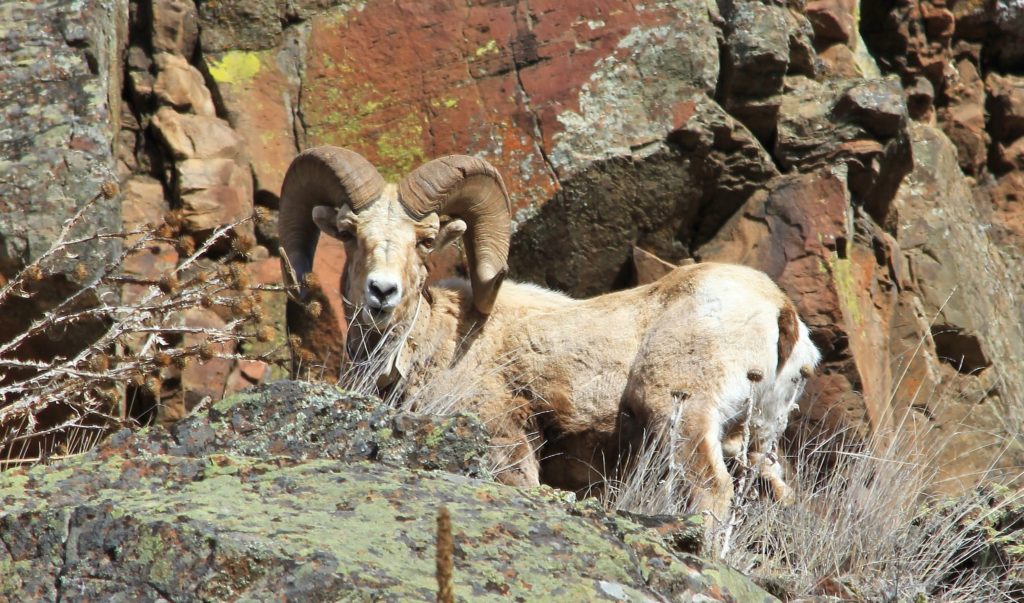
This post is long overdue. After all, North Fork Asotin Creek is our closest and most frequented trail. We’ve hiked it dozens of times and still look forward to every visit. I’m not sure why this post has taken me so long. Perhaps choosing from my 1,000+ photos from the trail seemed like too great a task. Perhaps other posts have always seemed more exciting. Perhaps I felt like I’d be letting everyone in on our secret place.
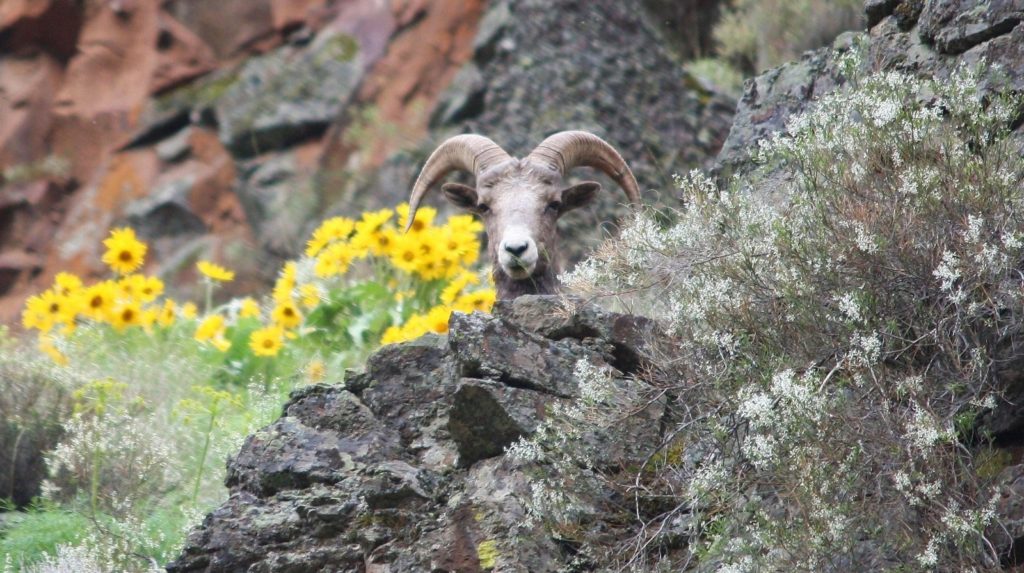
It isn’t as though I’m letting the cat out of the bag. Asotin Creek is no secret—its been featured in Backpacker Magazine and is well documented by the Washington Trails Association. Still, it always feels like our private trail when we’re there. Frequently, we don’t see anyone else on the trail. On an exceptionally busy day, we’ll find four or five other cars at the trailhead. We always see far more wildlife than we do people. And we like it that way!
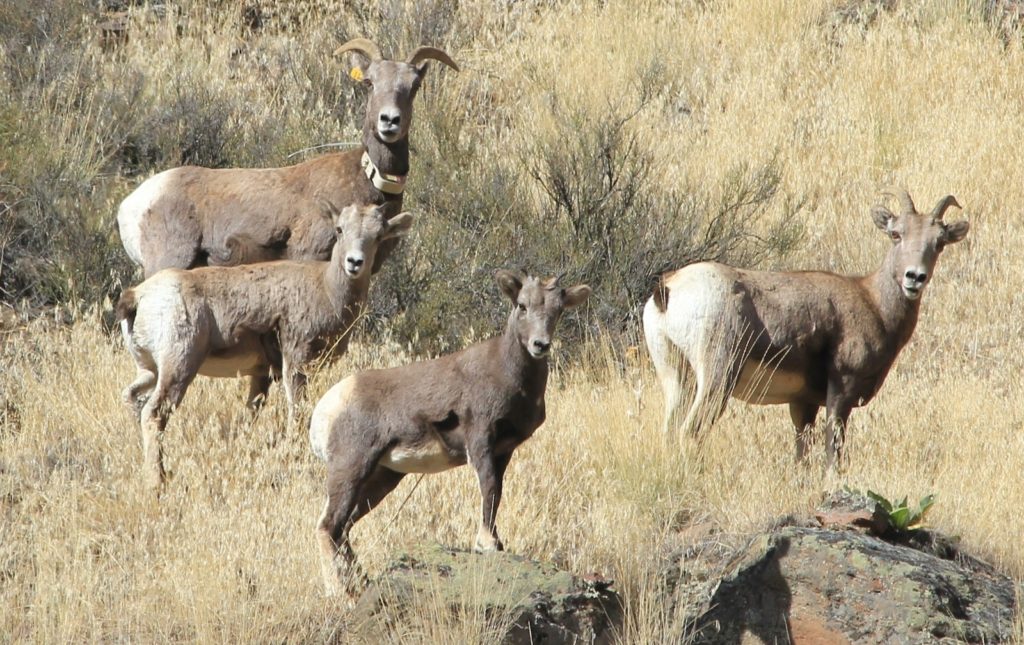
The trail is part of the Asotin Creek Wildlife Area which is managed by Washington Department of Fish and Wildlife. The area is prime winter habitat for large game such as elk and deer. The area is also home to many smaller mammals, birds, amphibians, and reptiles. A partial list of our sightings include frogs, rubber boa snakes, coyote, cougar prints, bear scat, stellar jay, grouse, turkey, belted kingfisher, more songbirds than I could ever identify, and multiple species of woodpecker, hawk, and owls. Speaking of turkey, it is common for us to spot a hundred or more turkey on the drive from Asotin.
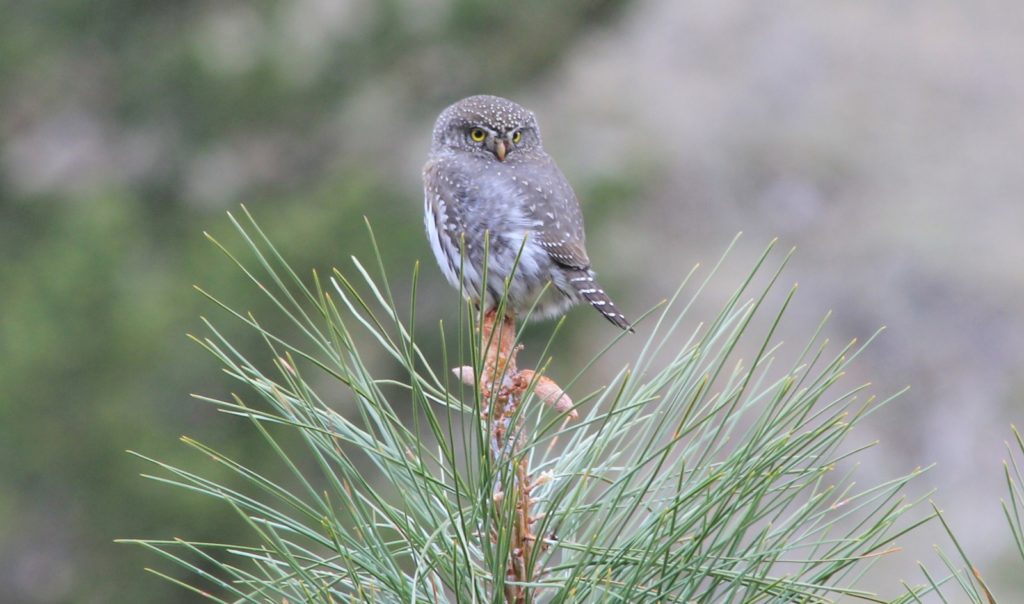
pygmy owl 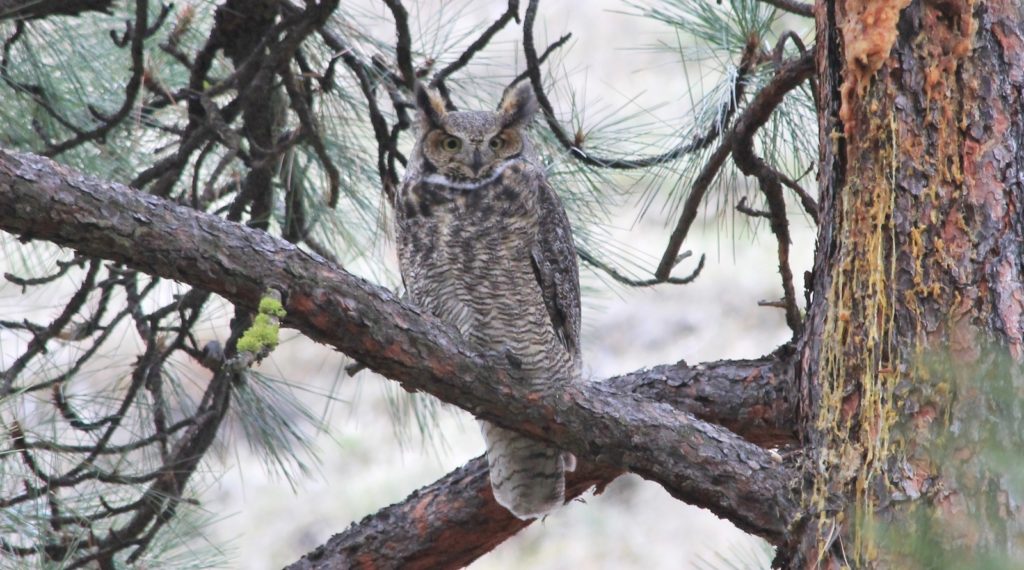
great horned owl
Asotin Creek, a tributary of the mighty Snake River, is also a critical watershed for steelhead, bull trout, and chinook salmon. Looking at the small stream, it is a little hard to believe it was once prime steelhead fishing, but my grandpa pulled some whoppers out of here back in the day. Today, the watershed is considered at high risk due to fragmentation and stream modifications.
For us, the real star of the show is the thriving Rocky Mountain bighorn sheep population. We spot these stunning creatures over 90% of the time. It is is rare that we get skunked. They aren’t always easy to spot—you have to keep a constant and close eye up each side canyon. But you will most always be rewarded for your efforts. On the few trips we have been skunked, I consider it a failure on our part to spot them, not a lack of their presence.
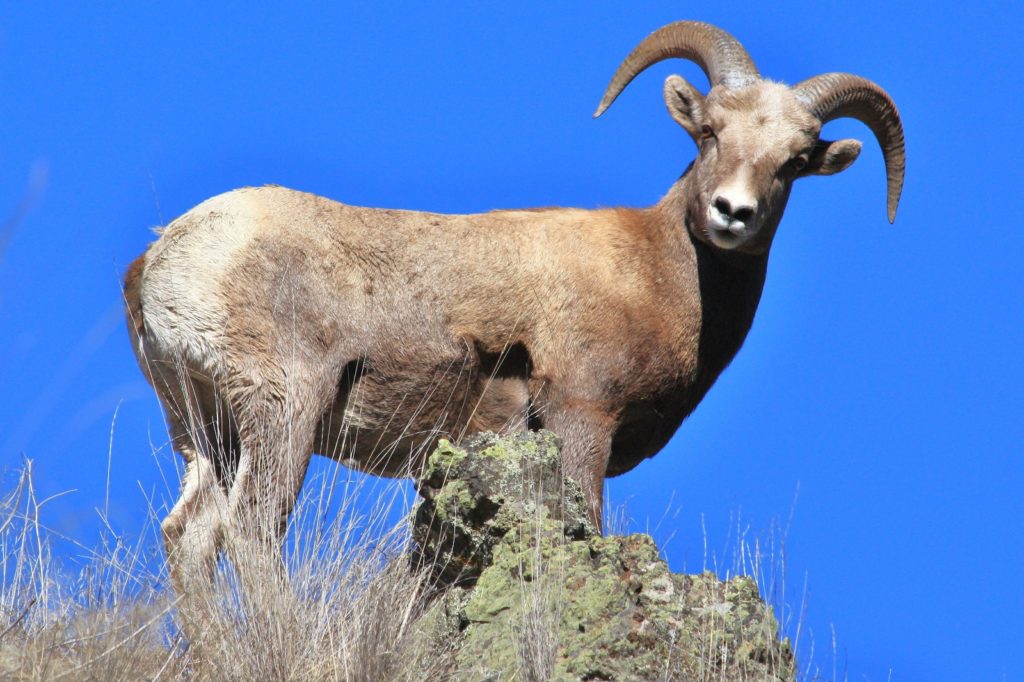

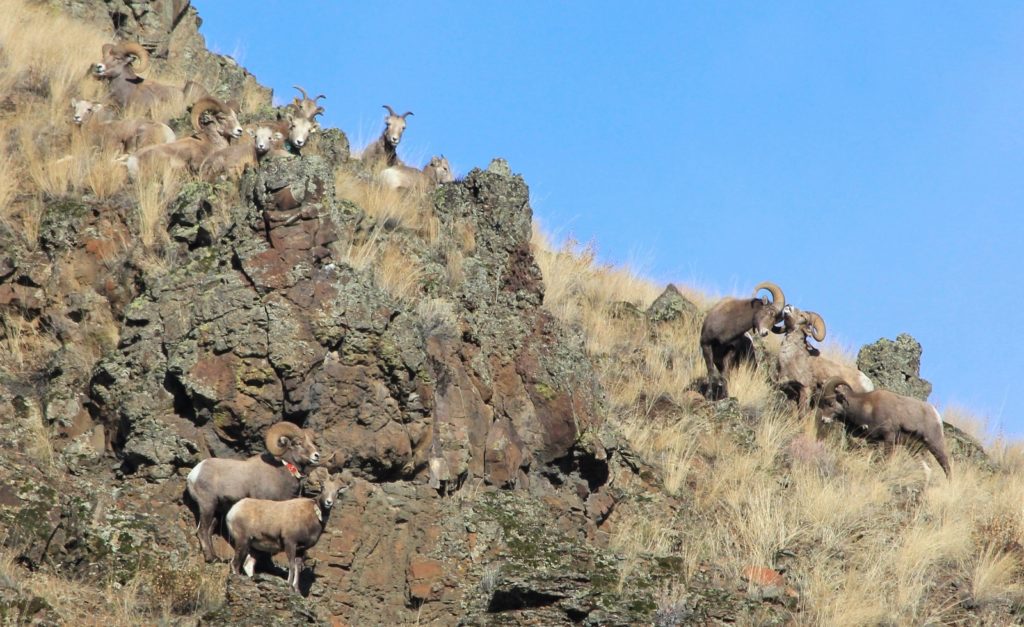
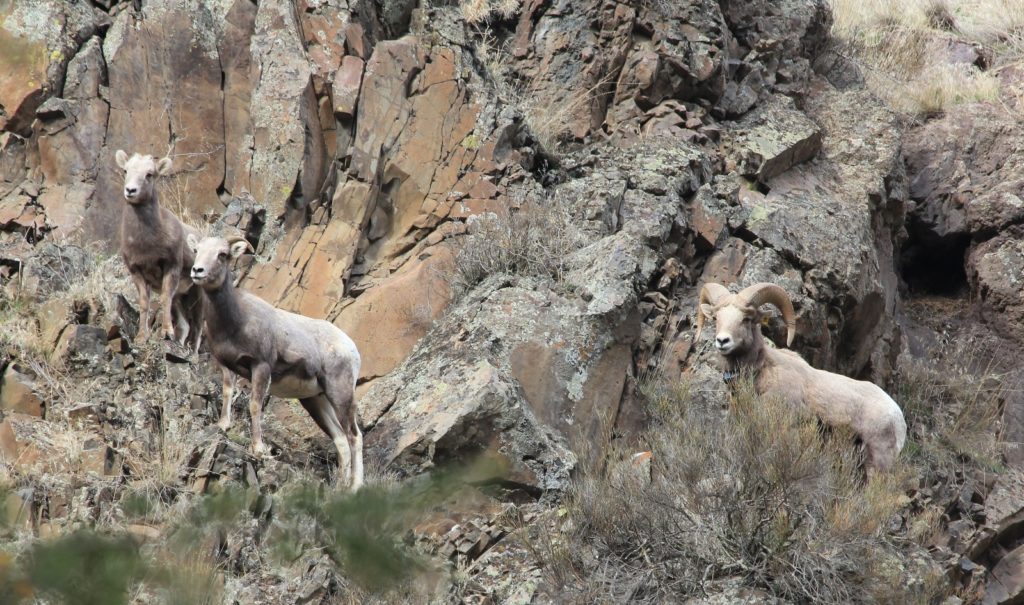
So why have we hiked this trail so many times? The reasons are many. First, it is just half an hour from our home in SE Washington. Second, it is generally hikeable year around, something that is really hard to come by in the Inland Northwest. Third, the wildlife viewing opportunities are outstanding. And lastly, the nearly flat trail makes this a good option for family and friends who want to join us. We’ve hiked Asotin Creek with all ages from 8 to 83.
North Fork Asotin Creek Trail #3125 (elevation 1,990′) begins at the confluence of Lick and North Fork of Asotin creeks in the Blue Mountain foothills of SE Washington. This is Hells Canyon country where the states of Washington, Oregon, and Idaho come together—where the terrain is rugged and elevation changes are extreme.
From the large parking area, the foot crossing of Lick Creek used to be a challenge during runoff in late spring. Sometimes we’d rock hop our way across, but other times we’d have to make a precarious crossing over a large downed tree. A recently installed footbridge has removed that obstacle.
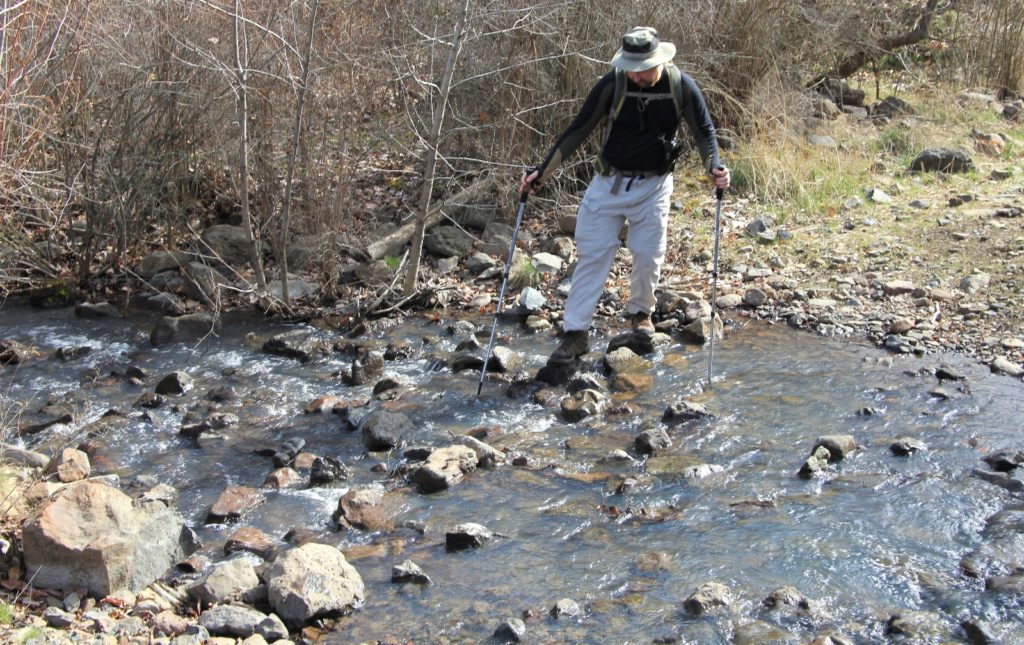
rock hopping Lick Creek 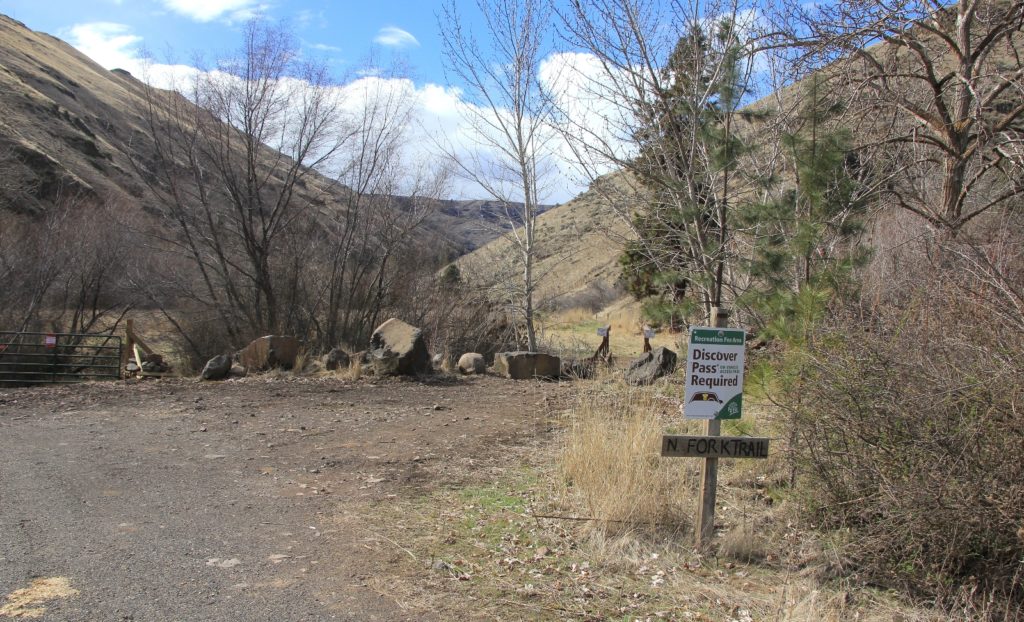
new footbridge at TH
Past the Lick Creek crossing, the trail continues as an old single track road. The next four miles used to be open to vehicles, but the road was closed sometime around the late 1980’s or early 1990’s. In the roughly 15 years that we’ve been hiking the trail, we’ve witnessed nature reclaiming the corridor to more trail-like conditions making for a more enjoyable hiking experience.
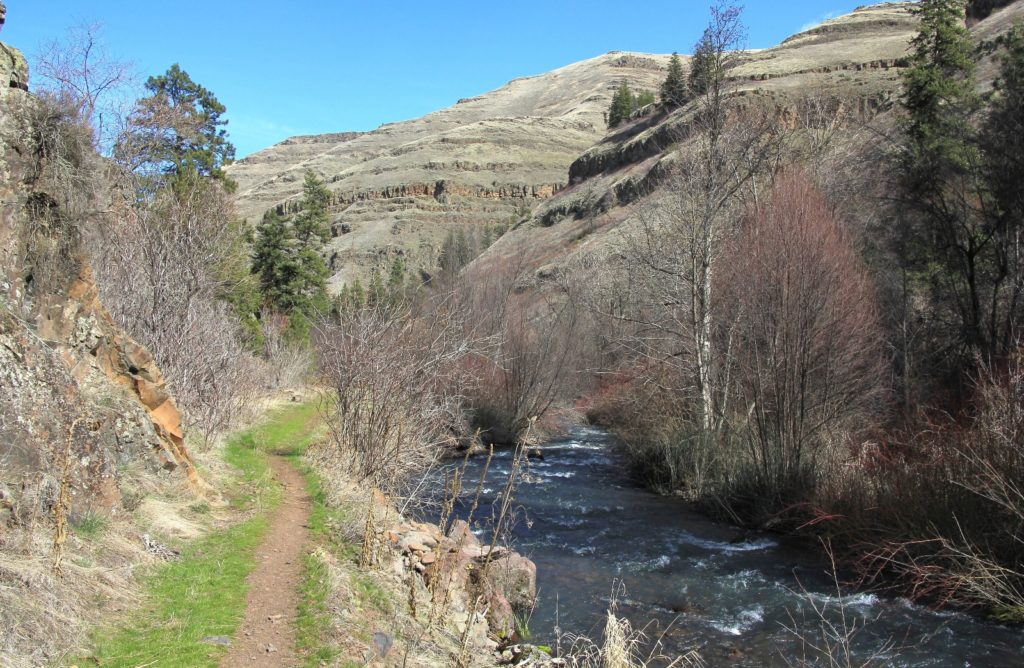
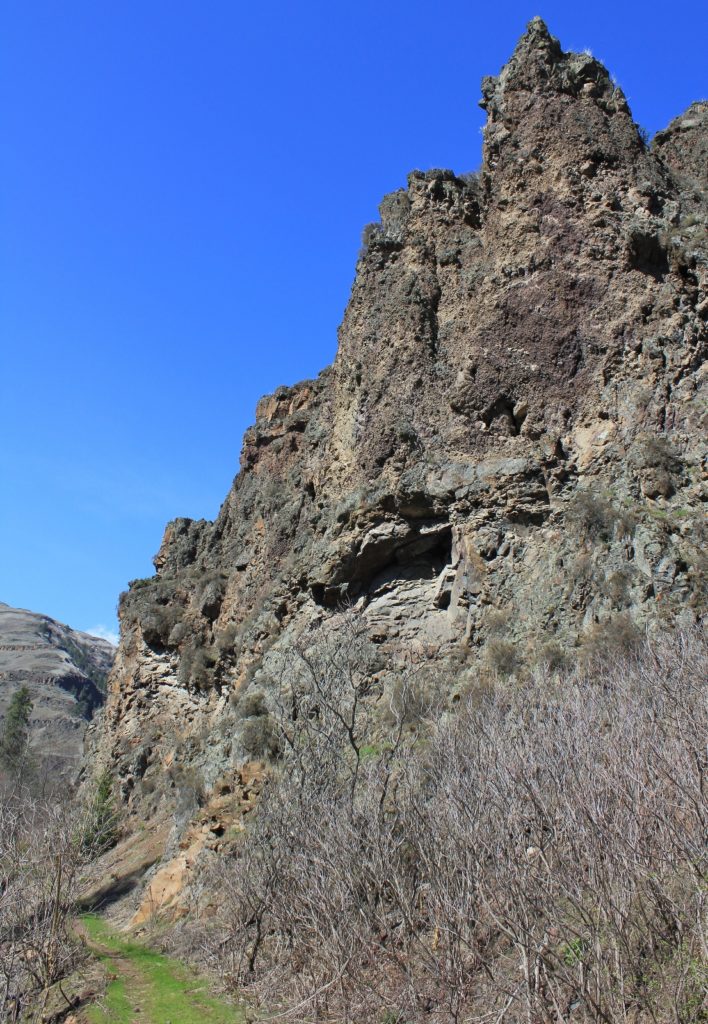
The first 3.5 miles is the prime bighorn section of trail. We’ve come to learn their seasonal preferences for different areas and can now usually predict where we’ll see the cliff loving acrobats. We keep a constant eye up to the cliffs and into each side canyon, which frequently leads to my tripping over rocks. The sheep always see us before we see them and they never seem weary of our presence. Generally they are perched in among the basalt cliffs where they are safe from cougars, not to mention slow and clumsy humans. On cold winter days, we are most likely to find them sunning themselves just above the shade line.
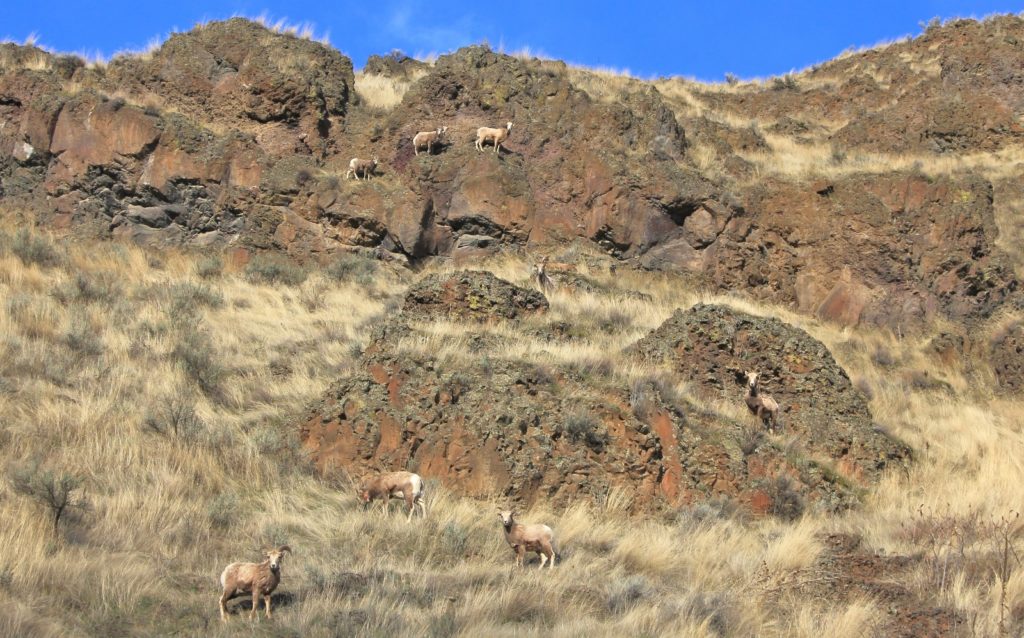
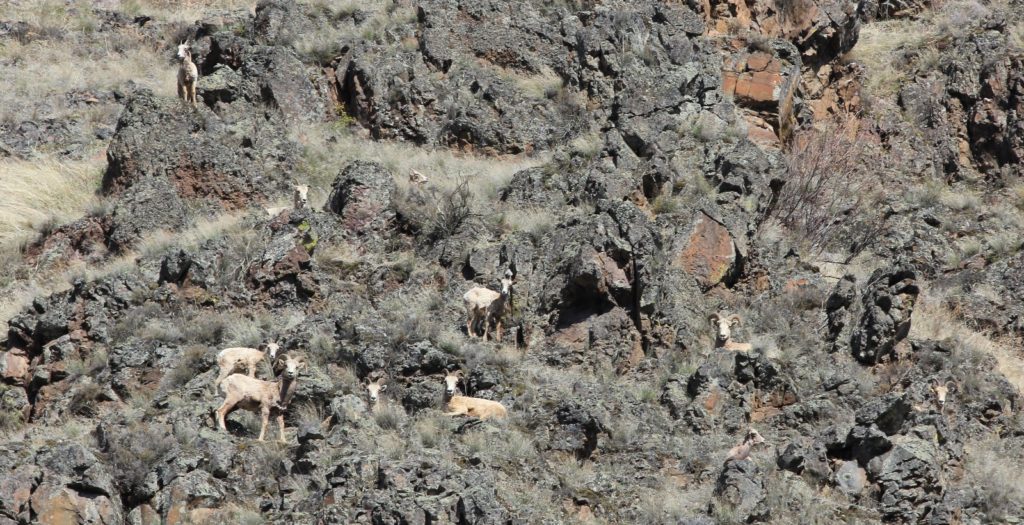
This lower stretch of the trail is a pleasant stroll with North Fork of Asotin Creek at your left and towering basalt cliffs to the right. Ponderosa pine dominate the dry coniferous forest here. If you are fortunate enough to visit in May and June, the hillsides are a brilliant green and wildflowers abound. Like with all streams in this arid region, you will want to keep a vigilant eye open for poison ivy which can occasionally be found in large clumps not far off the trail. You will be fine if you stay on the trail, just be careful if you step off trail to use the facilities!
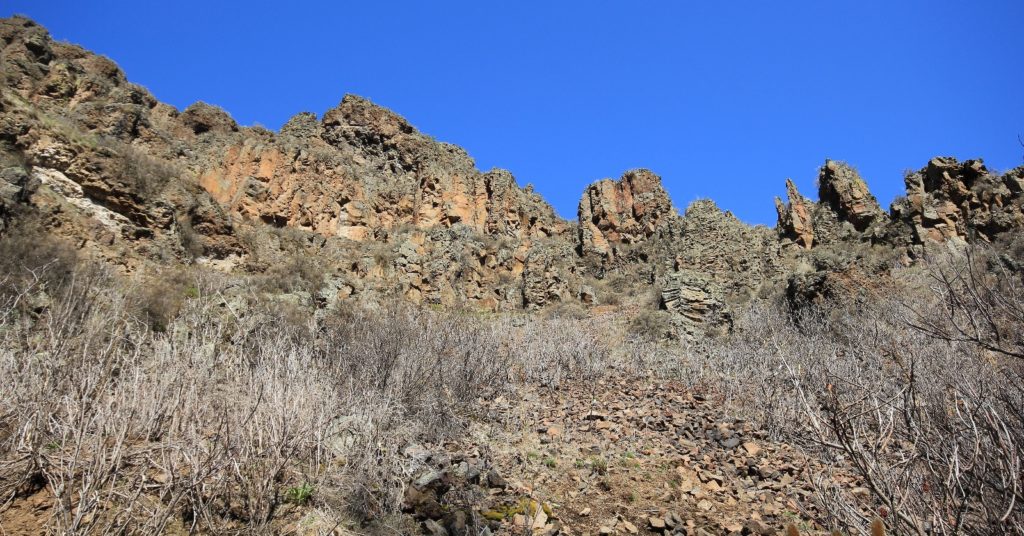
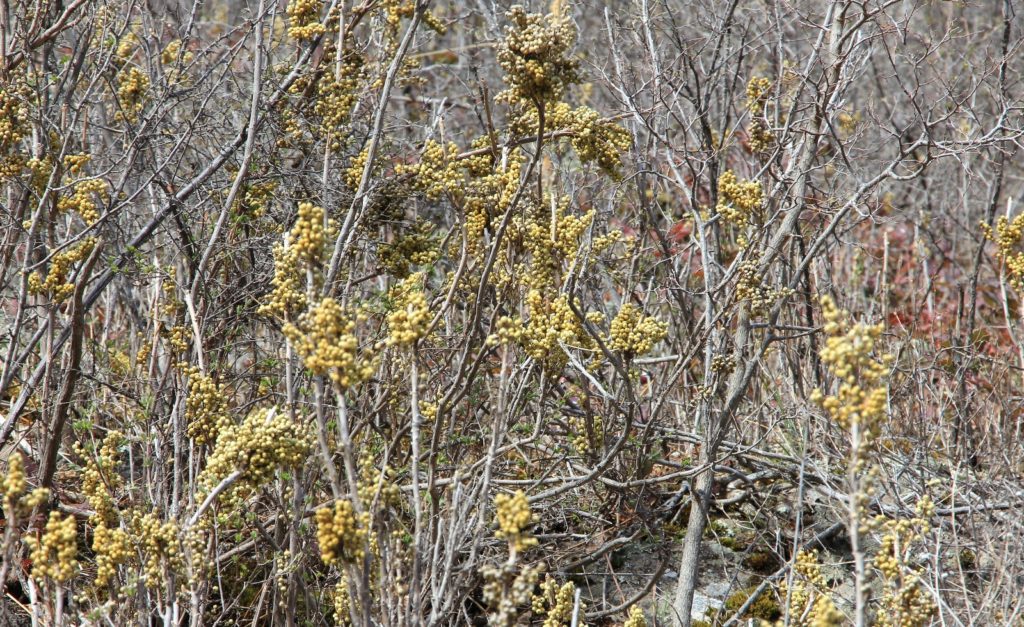
At 4 miles from the trailhead, the trail enters Umatilla National Forest where those with strong legs can continue another six miles up to Pinkham Butte. Jason backpacked this as a Boy Scout back in the 80’s. He has fond memories of blisters and losing a toe nail. Backpacking was a bit of a death march back in those days, but now it is one of Jason’s favorite activities.
We’ve had many memorable trips up Asotin Creek over the years. It was here that Jason took me on my first backpack in 2011. We cobbled together some car camping gear (heavy) and a couple new external frame backpacks (which we hated and quickly got rid of) and set off for an easy trip up the creek to see how I’d like it. It poured down rain most of the weekend and I quickly realized that I could not do without a cup of hot coffee on a cold, wet morning. But with better gear, backpacking seemed like something I’d really enjoy.
In November 2012, we took my mom, dad, uncle, and 83 year old grandpa up Asotin Creek for some wildlife viewing. We saw five different groups of bighorn just above the trail that day. It was special for me getting to show family our trail and those magnificent bighorns.
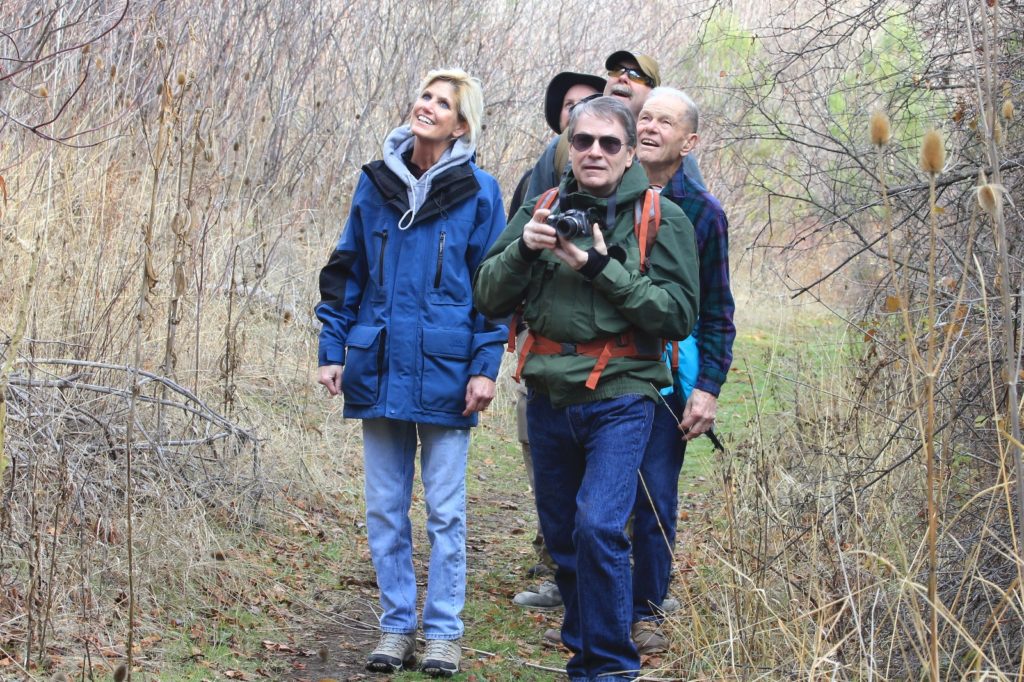
That same month, we took a student employee of mine out in search of bighorn. Miranda, who was working on her undergrad at Washington State University, had a deep passion for mammals. On a snowy November morning, we hiked Miranda four miles up the trail. We saw nothing… not a single thing. You could see the disappointment in Miranda’s body posture on the return hike. We were almost back to the trailhead when suddenly there was a loud crash to our right and there he was—no more than 15 feet away was the largest ram we had ever seen on trail. He ran onto the trail and stopped directly in front of us. I quietly told Miranda not to move or say anything. The ram stared at us for a few seconds and then ran a short distance up the hillside toward a group of bighorn we hadn’t yet seen. Then he turned and stood there, like he was posing for us. What a thrilling memory to share with someone who is now closing in on a PhD in wildlife biology.
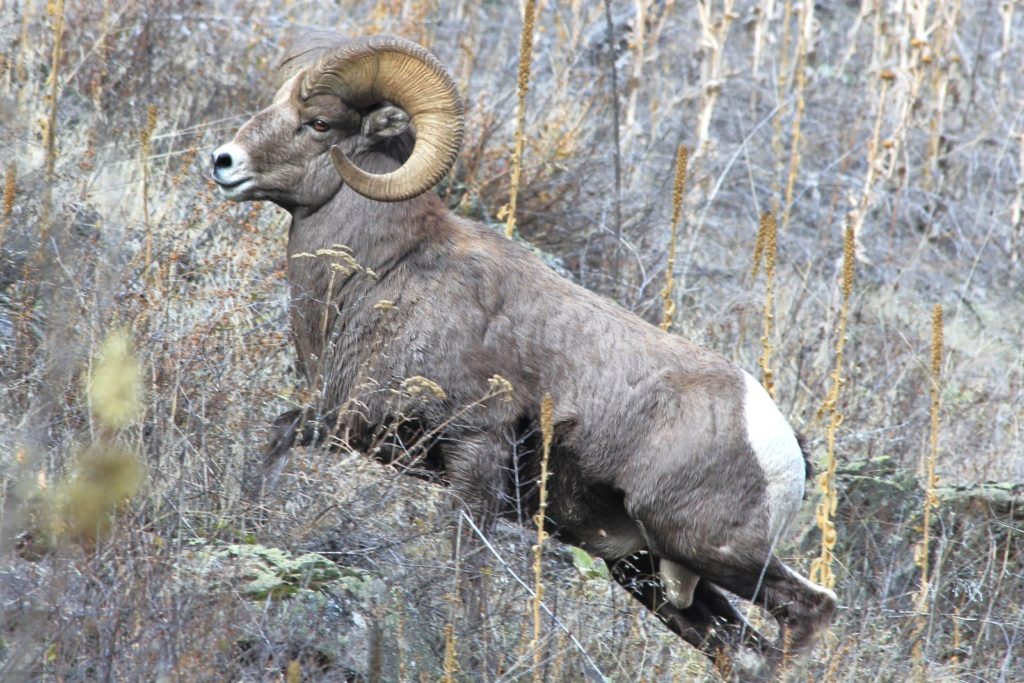
On another beautiful fall day in 2011, we were fortunate enough to watch several good sized rams in rut. We spotted a group of bighorns up on the cliffs. There were the usual ewes and lambs in the group, but we also noticed six large rams close together. Several of the rams began showing aggressive behavior and suddenly there was a loud CRASH that I could actually feel. The two largest males were charging one another and their violent collisions echoed throughout the canyon. Beside them was a cute little ewe and two slightly smaller rams who didn’t dare enter the battle. After a couple seconds, the ewe thought better of it and started running away. It took all four rams a few seconds before they realized their prize had escaped. They took off after her—no doubt one of the dominant males winning that conquest.
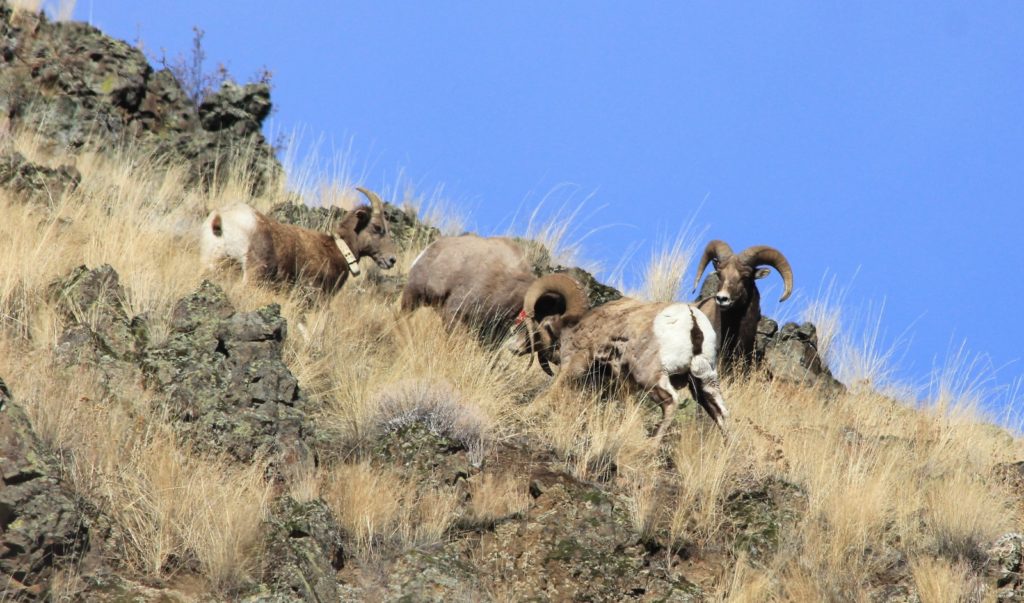
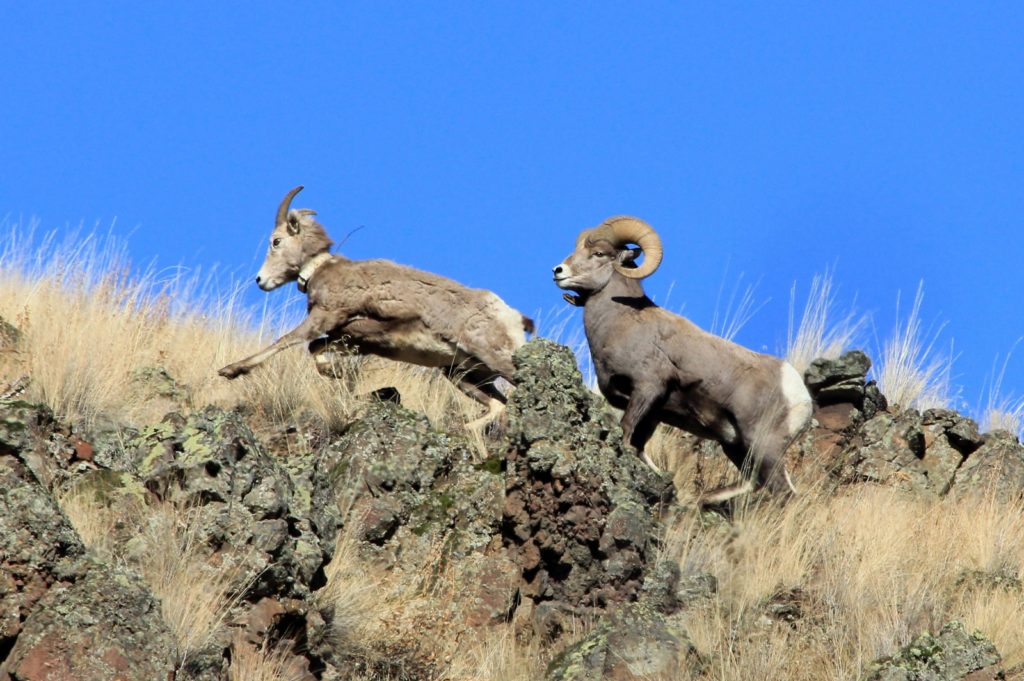
In 2017, my girlfriend Kelli texted me and said her eight your old daughter Addi was becoming more interested in the outdoors and really wanted to go on a hike. Intelligent and entertaining, Addi later explained to me that she goes for walks in the mountains with her family, but that she wanted to go for a “real hike” without her little sister. Addi made it in 2.5 miles, no doubt fueled by her cheesy goldfish snacks. She never complained on the return hike, but occasionally asked how much further. I was proud of her for bagging 5 miles on her first “real hike”! It was a fun day out on the trail with these entertaining ladies.
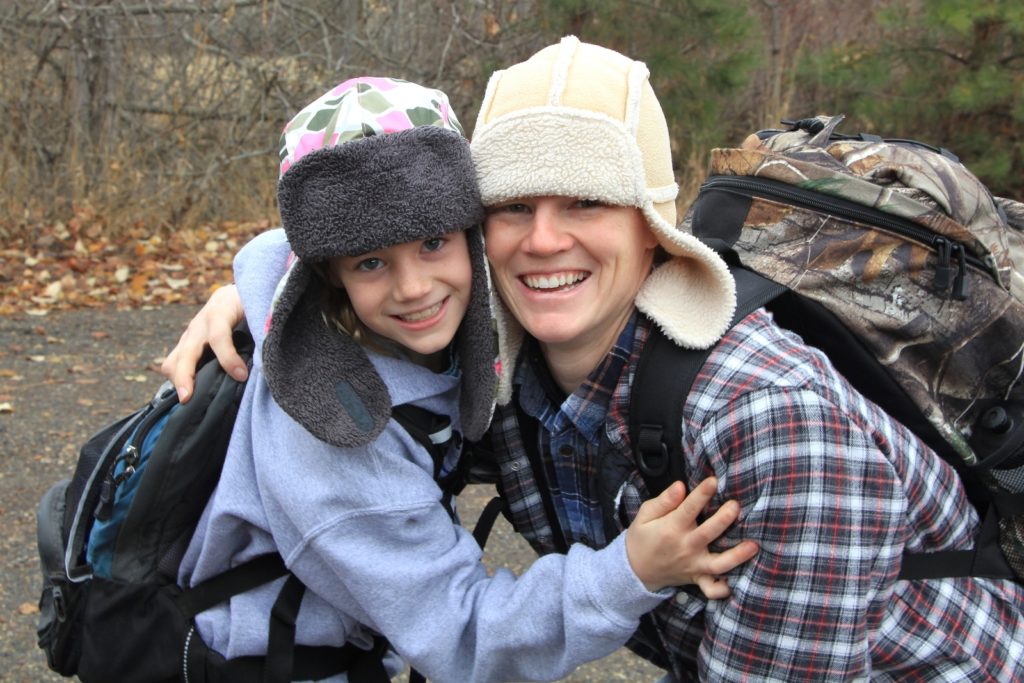
Addi & Kelli 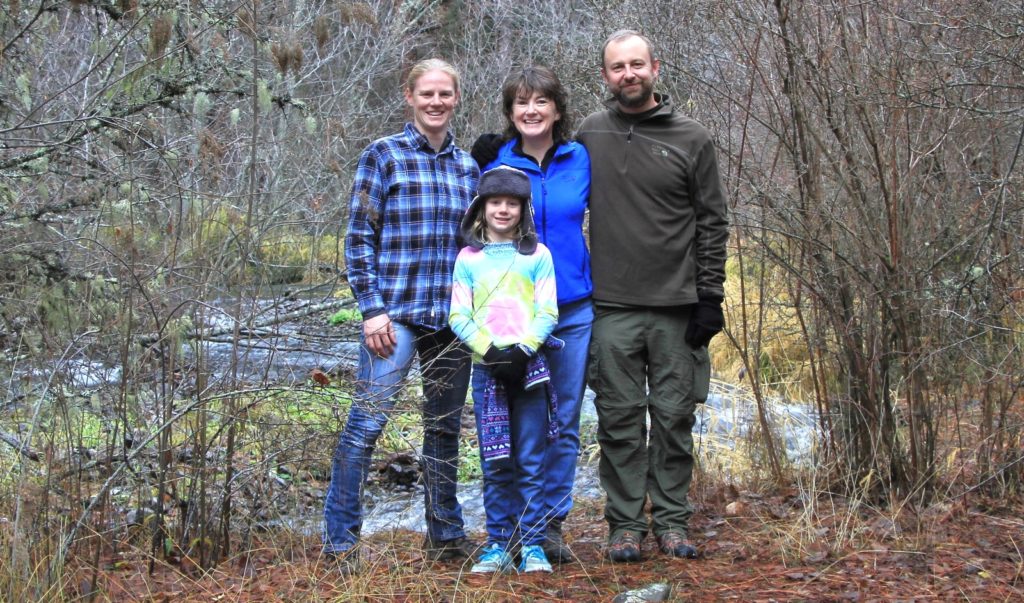
fun with friends
Each season has its own beauty on Asotin Creek. Winter can bring beautiful snow covered mountains and crystal clear blue skies. Spring is a favorite for its lush green hills with exploding wildflowers. Fall brings beautiful yellows, reds, and oranges to the flora and we have our most impressive bighorn sightings. We never go in the summer since we spend our time in the high country and the canyon would be intolerably warm.
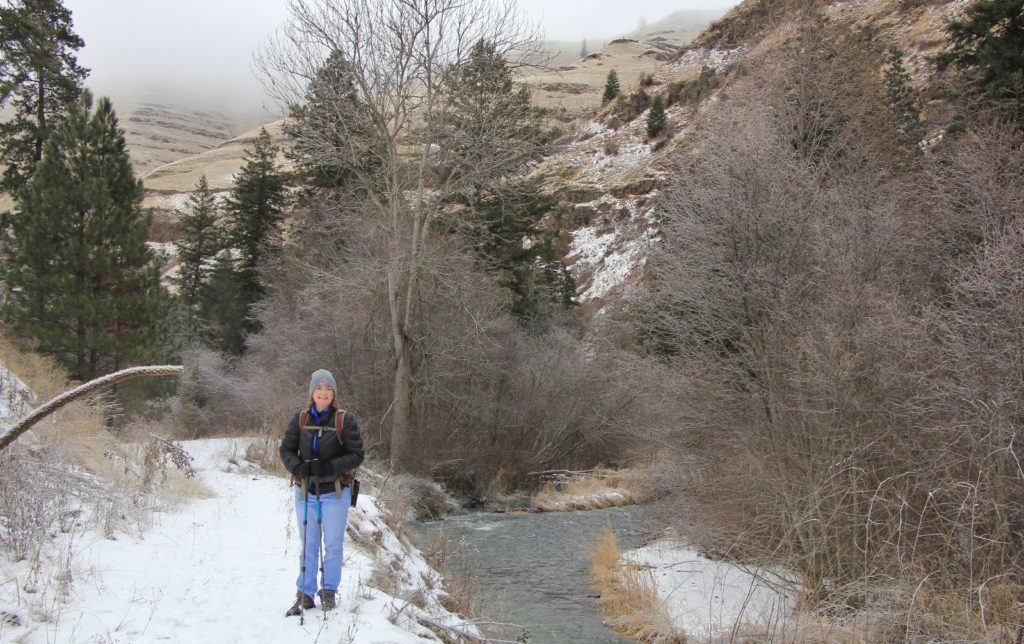
winter on Asotin Creek 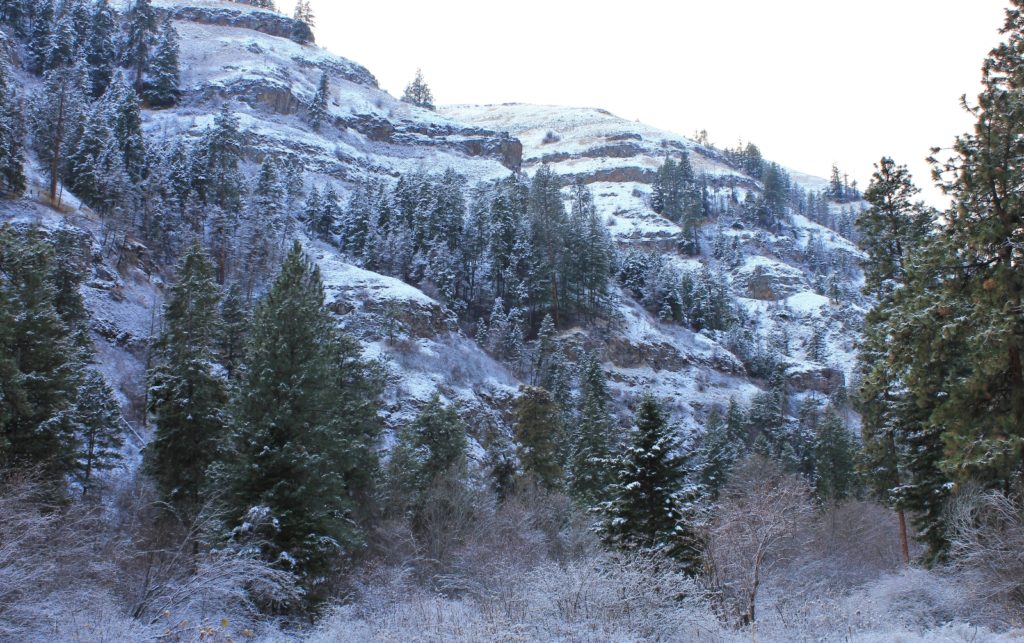
moody winter’s day
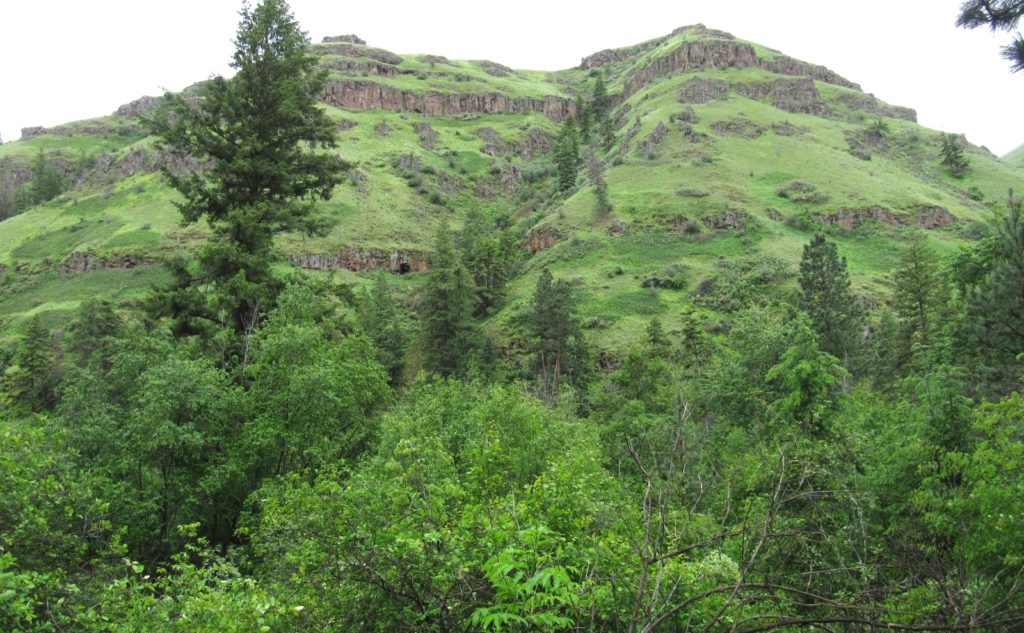
lush greens of late spring 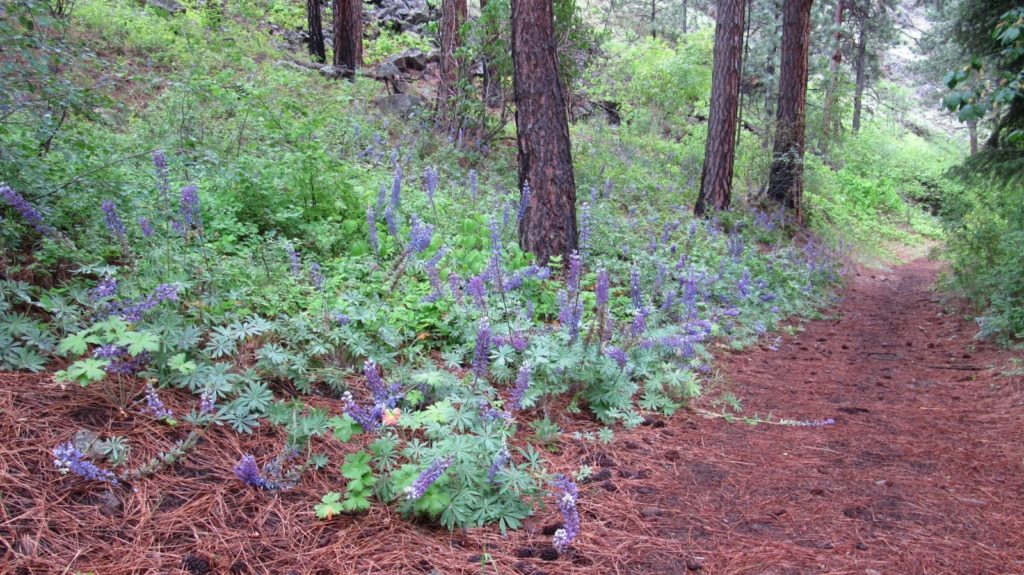
late spring wildflowers
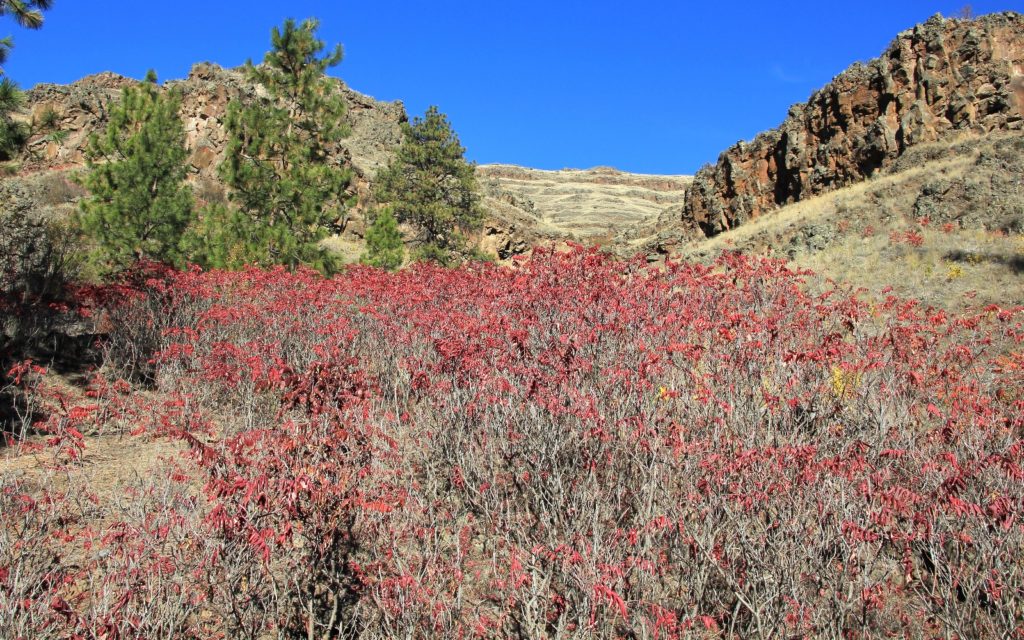
sumac colors 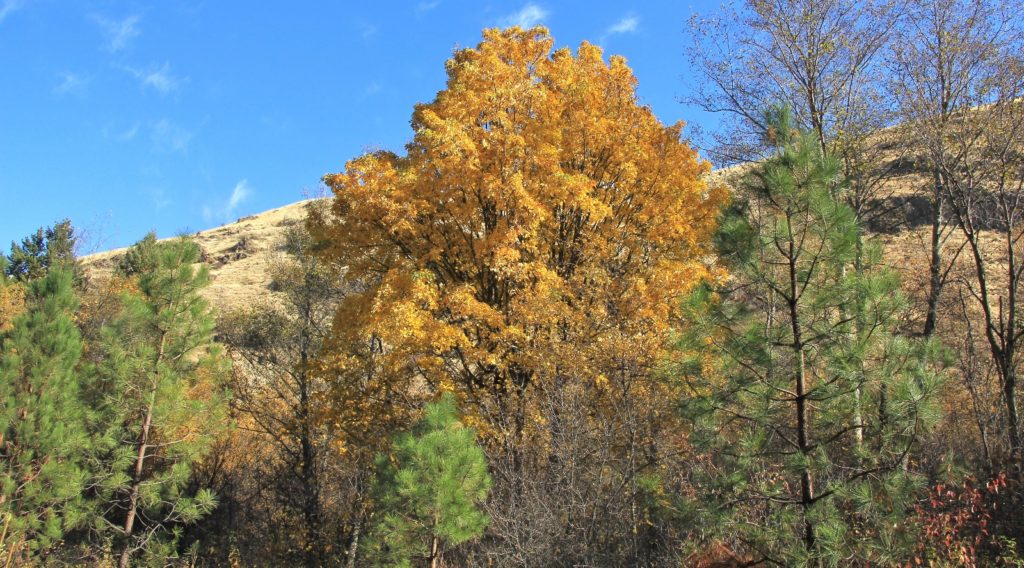
golds of fall
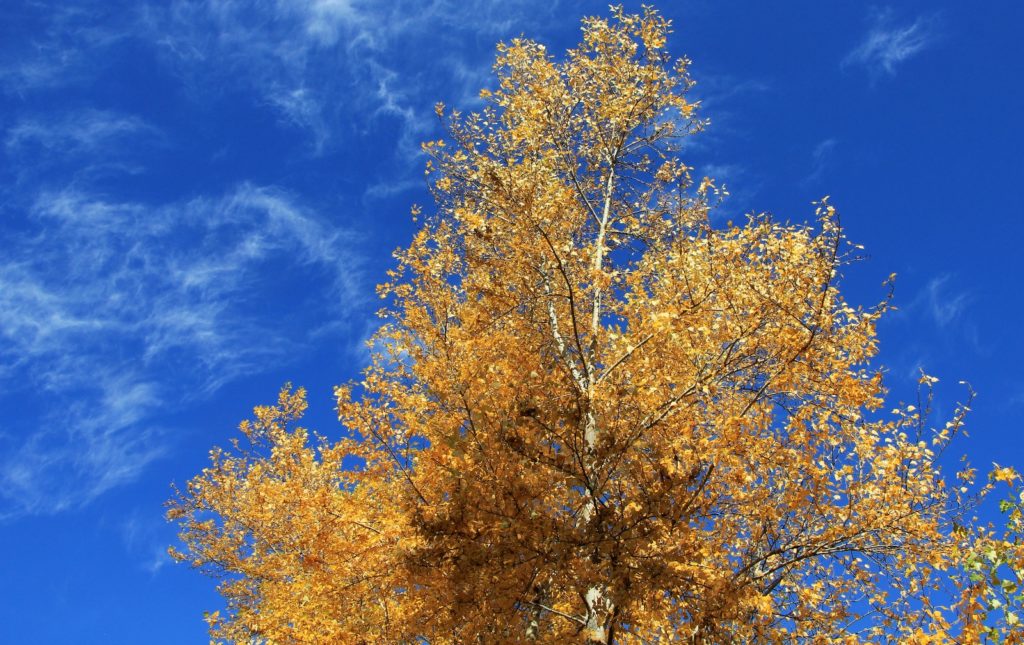
blue sky days 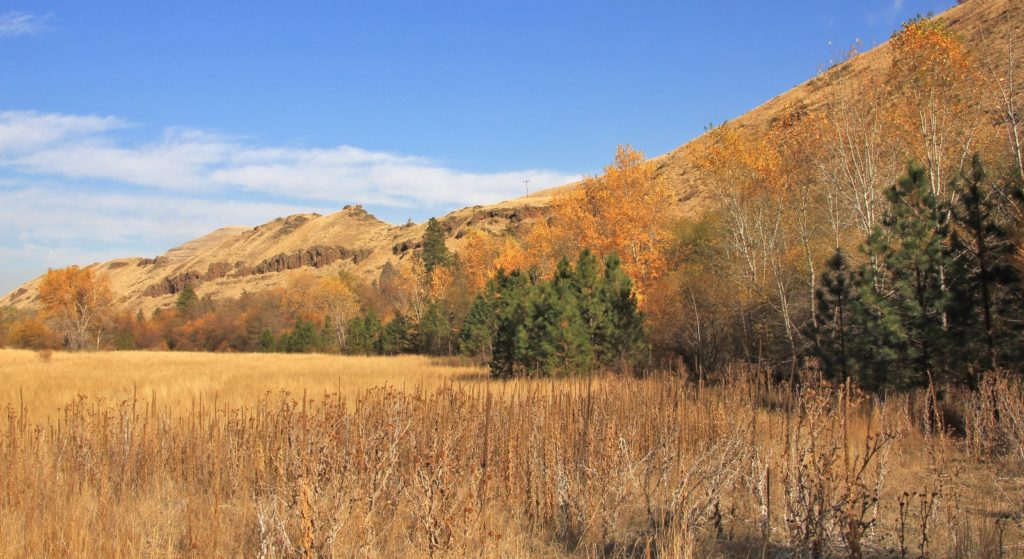
love the colors of fall
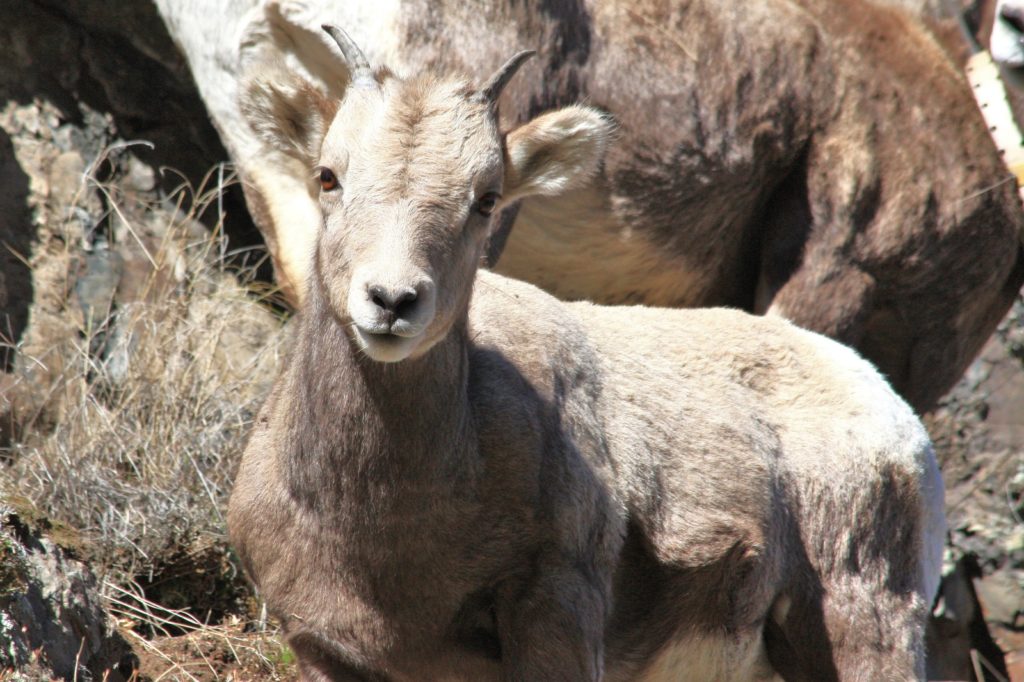
Directions to Trailhead: From Clarkston, Washington, travel south on SR 129 to the small county seat of Asotin. Just before crossing the bridge into Asotin, turn right onto Bauermeister Drive which becomes Asotin Creek Road. Continue 2.9 to an intersection and bear right onto CR 1100. Travel 11 miles to a second junction at the signed wildlife area. Turn right onto CR 181 (South Fork Asotin Creek – Lick Creek Road). Continue approximately one mile to the North Fork Asotin Creek Trailhead on the left hand side of the road. A Discover Pass is required. There is a large parking area with room for horse trailers, but no restroom facilities. From December 1st to March 31st, the road is gated shut approximately 0.4 miles before the trailhead to minimize disturbance to wintering wildlife. The trail, however, is still open. Just park at the gate and walk the extra 0.4 miles down the road to the trailhead—if you’re like us, you can use the extra distance after all those big holiday meals!
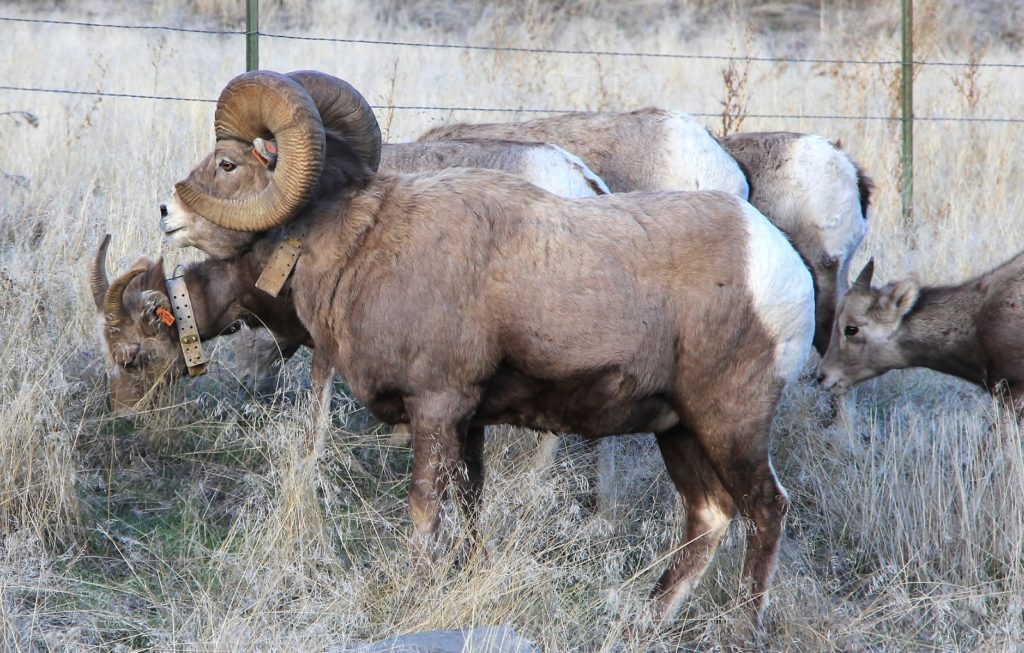
Got Gear?
Click here to see some of our tried and true gear. By accessing Amazon through the links on this page, you get the same GREAT Amazon pricing and they share a little with us. You don’t even have to purchase one of the linked items, simply access Amazon through our site and purchase anything! This helps us maintain Evans Outdoor Adventures and is much appreciated! Thank you to our supporters!
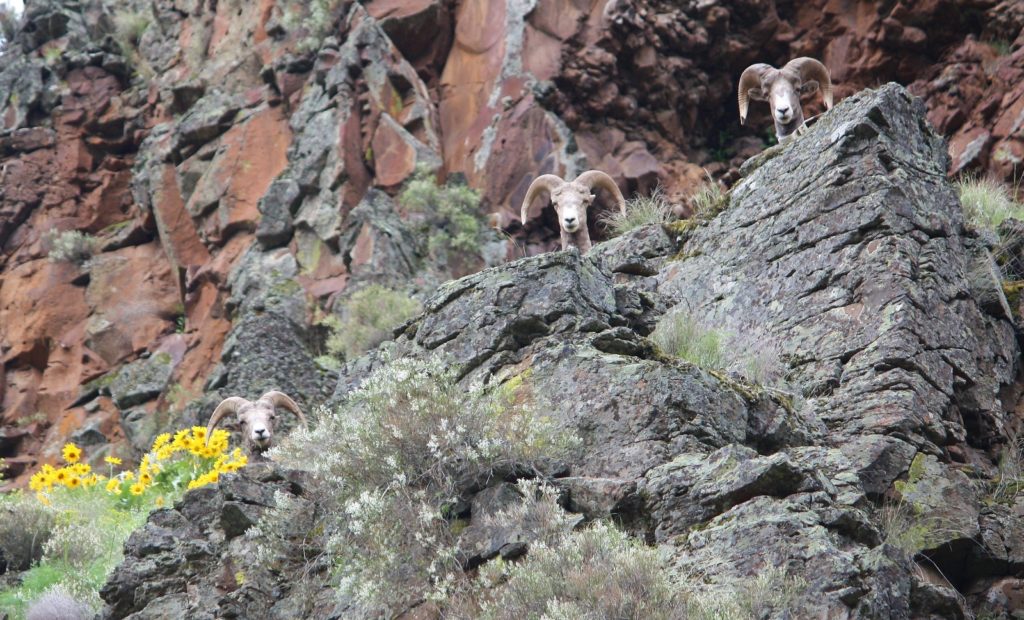
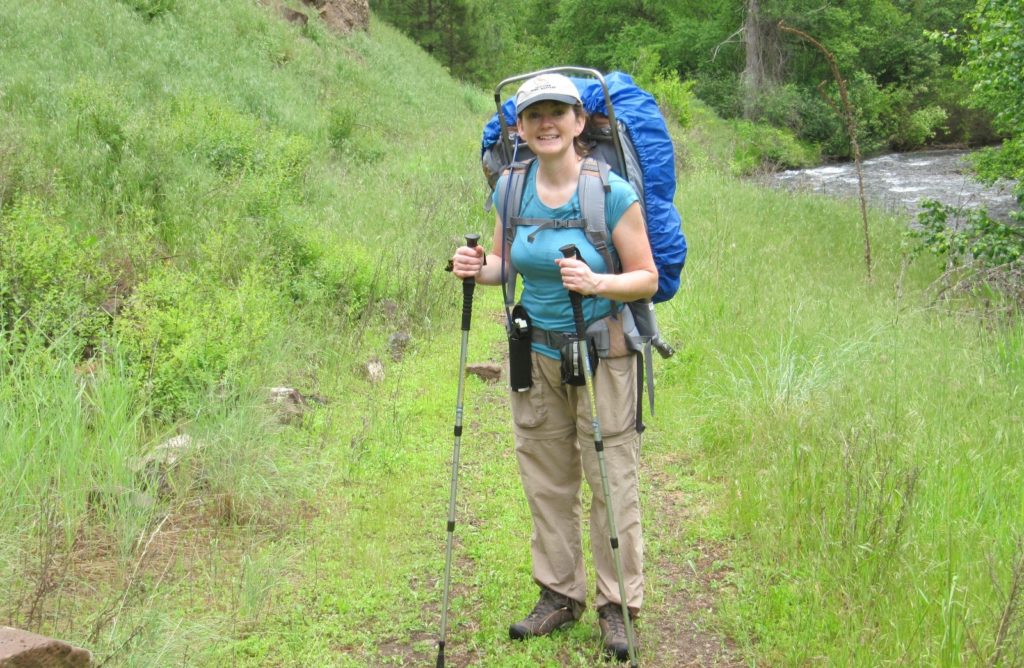
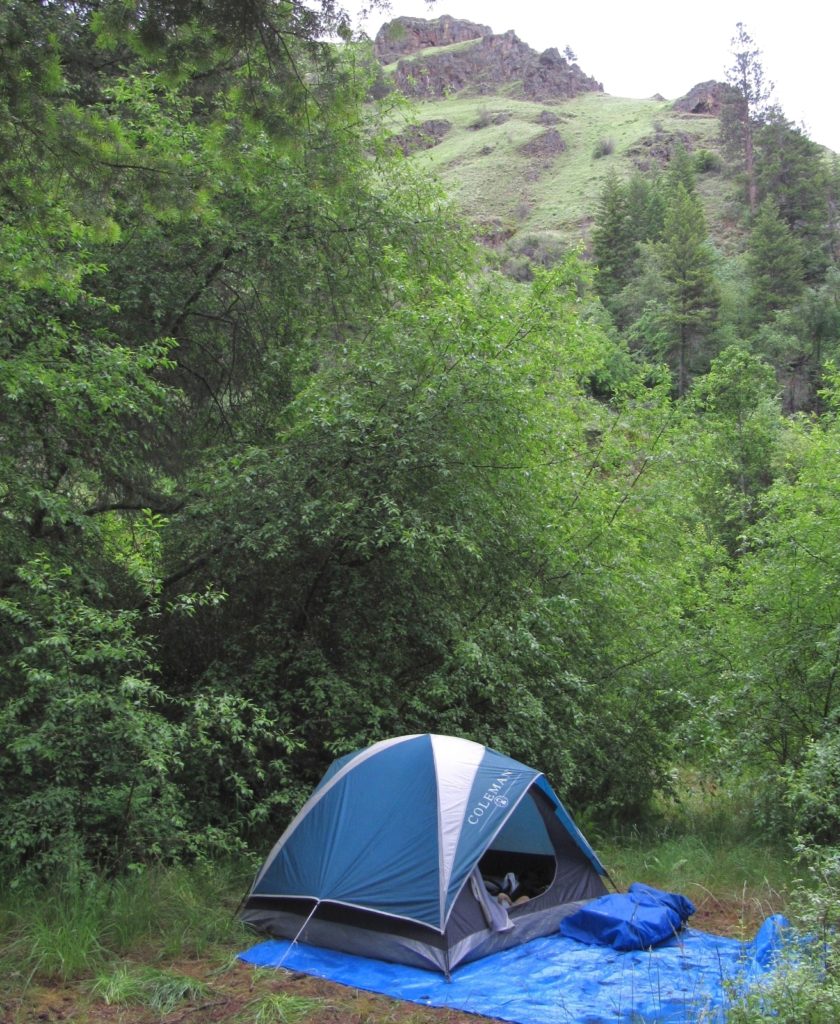
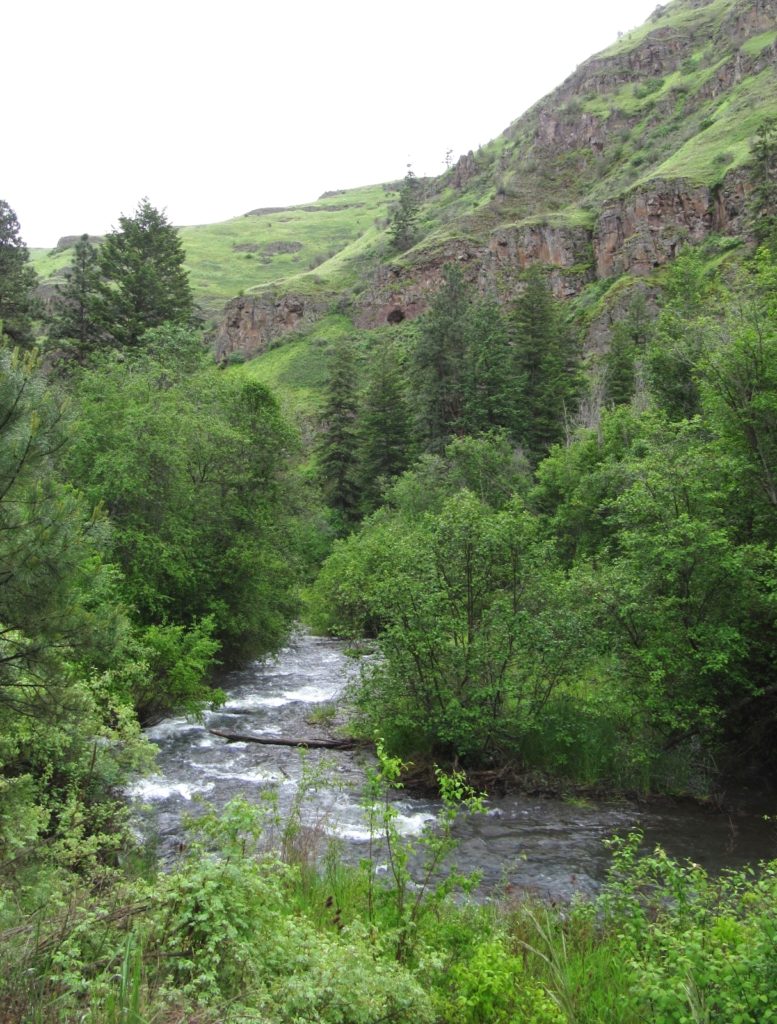
I enjoyed your journal and photos soooo much. I was a student a Lewis Clark State College in the early 1980s and loved to watch the bighorn sheep.
Thank you so much for sharing. They never seemed afraid to me.
Thank you for visiting our site and sharing your memories Claire. Jason and I are both LCSC alumni as well! 🙂
Happy Trails,
Lusha
That is cool! And Lusha is a beatiful name. (-:
My husband and I were on a motorcycle ride near there the day mount St Helen’s blew….. this was way before cell phones. The sky turned such a wierd color. It was erie. I wonder what the animals thought.
I write children’s books. (4th grade reading level) I am working on a collection of real animal stories right now. Would you happen to have an interesting story you might want to contribute? I have someone doing illustrations. If you think you might be interested, I could send you a book electronically, so you could see what it is like. Thank you for your consideration (-:
Claire, that is very sweet, thank you!
I was a kid the day St. Helen’s blew. I’ll never forget what the Clarkston sky looked like that afternoon and the pitch black that followed. I have memories of flying over the beautiful mountain not long before it blew.
Living and hiking in the PNW, we are fortunate to have many animal encounters. I don’t have any particular stories in mind, but I am intrigued by your kind offer and am interested in more details. If you would kindly send me a book, I’ll see what I can come up with 🙂 Please also give me an idea of what your timeline looks like. I’ve recently been working more due to COVID and we have some travels over the next two months. But I am very interested! Please email to evansoutdooradventures@yahoo.com
Happy Trails!
Lusha
Yes… I will email you a condensed file.
If you go on our website… Suminski Family Books…. you will get an idea of what kind of books I write….. Farm related books. (-:
Recently I started a new series of animal stories, geared to 4th grade reading level. They are really for people of all ages.
We are working on Animal Stories 2 and 3 right now. I plan to do 8 books with 12 stories in each book.